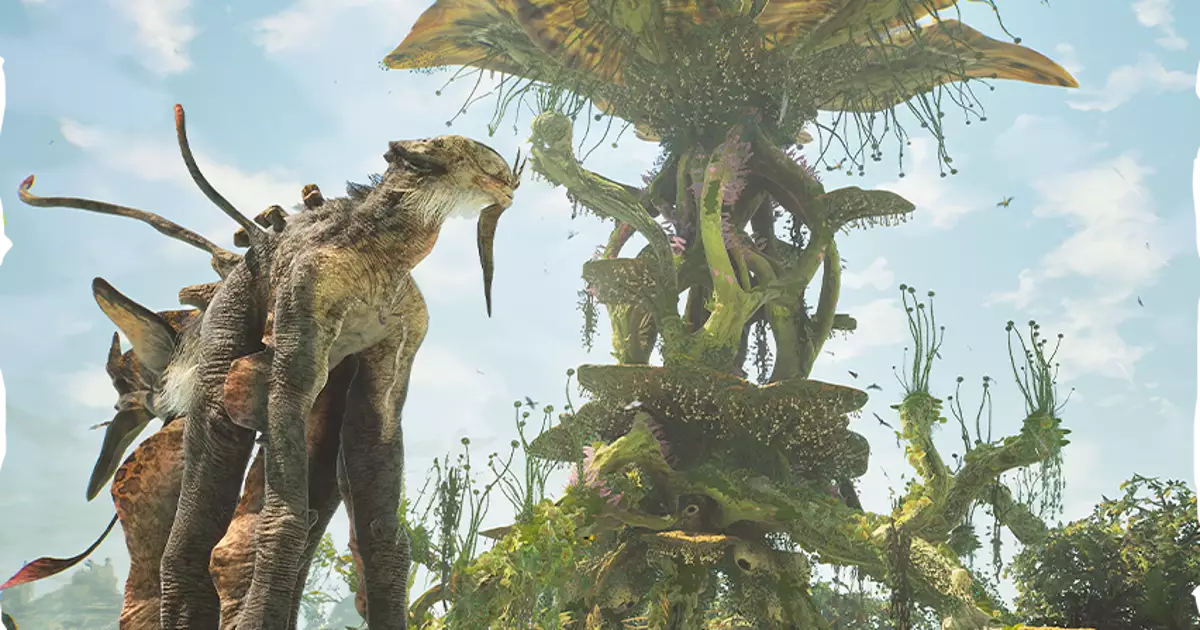The upcoming title, *Towers of Aghasba*, developed by Dreamlit, promises to transport players into a vibrant world brimming with lush environments and fantastical creatures. Scheduled for release on November 19, 2024, this open-world game taps into a unique blend of exploration, village-building, and survival mechanics. However, while the premise is captivating, it raises an important question: will the game deliver a substantive experience or fall prey to common pitfalls seen in many survival genre offerings?
At its core, *Towers of Aghasba* places players in the shoes of a member of the Shimu tribe, tasked with rejuvenating a landscape ravaged by a mysterious force known as “the Withered.” This dichotomy sets the stage for a conflict between life and decay, where the protagonist must navigate a world filled with both wondrous discoveries and perilous adversities. The game invites players to engage with local deities, cultivate vast gardens, and entwine themselves with the ecosystem. The ability to nurture whimsical creatures alongside the option to hunt for resources adds dynamic gameplay layers, which could be either a source of joy or moral contemplation, depending on the player’s choices.
Players will encounter an array of strange and charming wildlife, encouraging a dual approach to interaction: nurturing or hunting. The enchanting descriptions of creatures like the “floofy pastel dragon” evoke a sense of whimsy, yet there is a darker element in the combat system that allows for the elimination of these creatures for crafting components. This juxtaposition engages an array of emotions, reflecting real-world ecological issues where conservation and exploitation often clash.
*The Withered*, depicted as gigantic, undead tree-like beings shrouded in morose fog, introduce a contrasting aesthetic that broadens the game’s visual narrative. Their presence is not just an obstacle but a thematic representation of environmental degradation that players must confront. This dualism of ecosystems—between lush life and lifeless decay—holds significant potential for storytelling that resonates with contemporary environmental concerns.
The crafting system featured in *Towers of Aghasba* allows players to create weapons, armor, and elixirs, adding an element of strategic planning to survival. However, the concern arises regarding the game’s approach to tribal aesthetics. The visual and thematic elements appear to draw inspiration from indigenous cultures, yet it may be criticized for lacking authentic representation and depth. The delicate balance of honoring these cultures while creating a unique fantasy experience poses a challenge that Dreamlit must navigate carefully.
The crafting process itself, relying on holographic templates, presents a user-friendly experience but raises questions about the disconnect between the organic world and the artificial systems used to build within it. This design choice may undermine the immersive quality of the ecological phantasmagoria, as players might feel controlled by the mechanics rather than liberated by them.
Despite these concerns, the sheer amount of vegetation and animate life in the game paints an optimistic picture of a world bursting with serenity. Fans of games like *Subnautica* may find themselves drawn to the rhythmic dance of understanding wildlife and interacting with the enriched ecosystem of Aghasba. However, one cannot ignore the skepticism that lingers—a fear of the game devolving into yet another superficial survival title adorned with eco-friendly themes.
As we await its release, there lies an intense curiosity surrounding how *Towers of Aghasba* will balance its abundant visual allure with substantive gameplay and ethical narratives. The promise of creativity and ecological richness stands before us, yet we must hope that deeper reflections and authentic experiences will differentiate it from its myriad contemporaries.
In a world increasingly conscious of ecological matters, the success or failure of *Towers of Aghasba* may well hinge on its ability to weave together fantasy with meaningful engagement, both with its mechanics and the cultures it draws from. The hope is for a game that not only entertains but also inspires a deeper appreciation for the ecosystems we share.


Leave a Reply